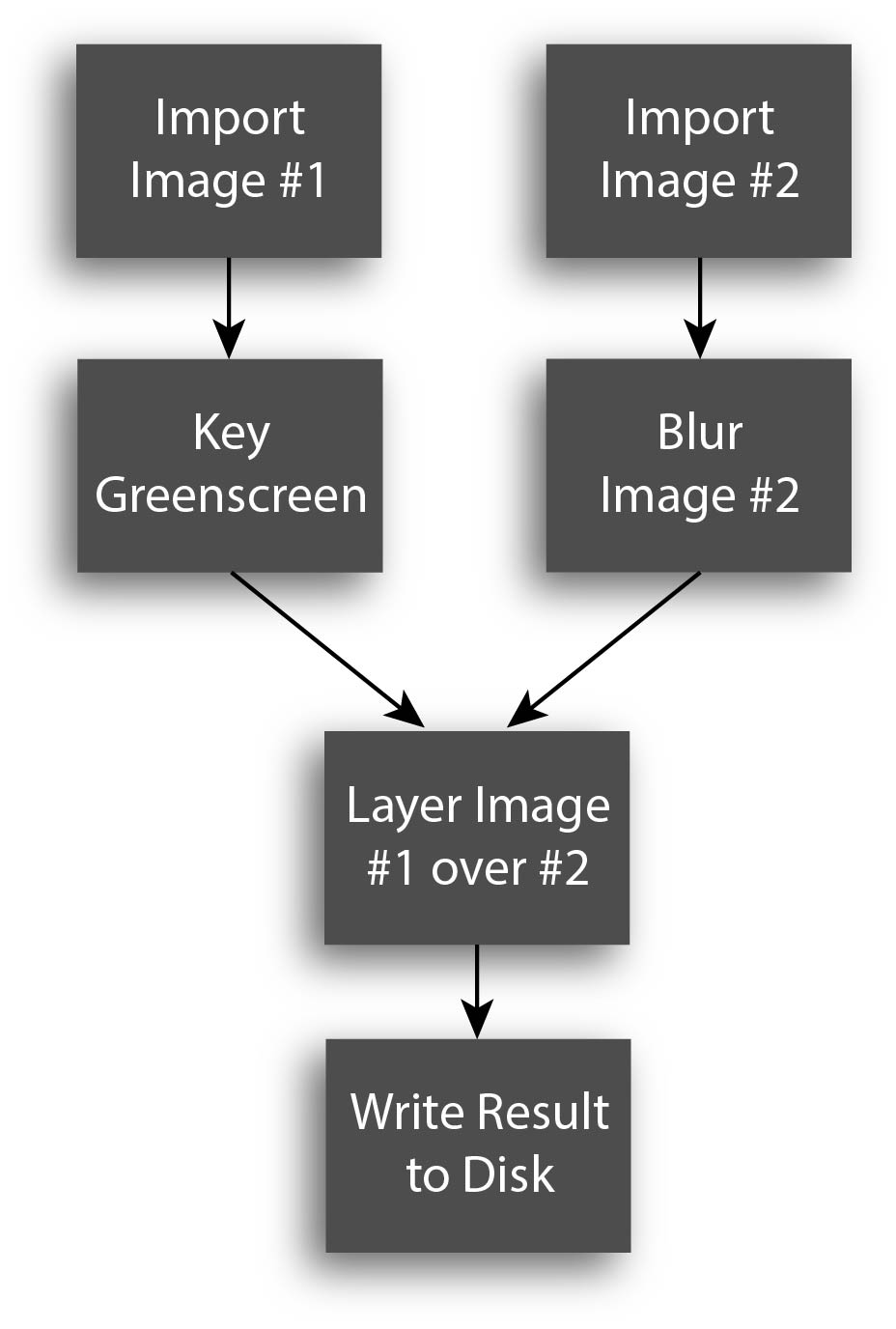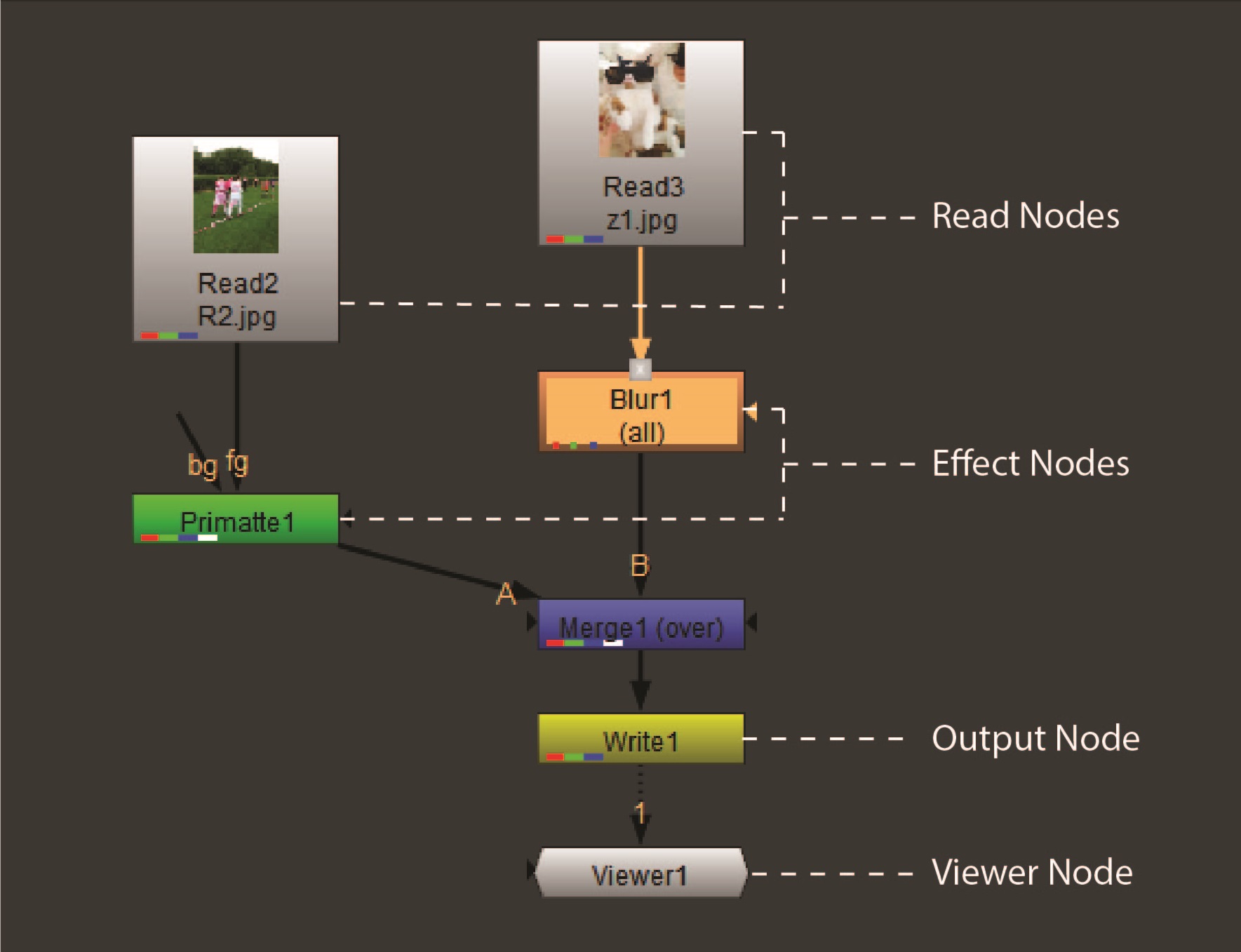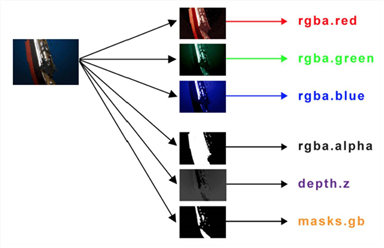Search is based on keyword.
Ex: "Procedures"
Do not search with natural language
Ex: "How do I write a new procedure?"
Contact Support
Key Concepts
Nuke products are a resolution-independent compositing system, with extensive channel support, powerful image manipulation tools, and a rich 3D compositing environment. This section explains concepts you should know before using Nuke products.
Understanding the Workflow
A Nuke project consists of a network of linked operators called nodes. Nuke's Compositing environment utilizes a node-based workflow, where you connect a series of nodes to read, process, and manipulate images. Each node in the script, or comp, performs an operation and contributes to the output.

You can open a Nuke comp file in a text editor, and a series of sequential commands are displayed, which are interpreted and executed when you render the output.

|
In the image above, you see an example of a very simple Nuke script. Two Read nodes reference media on disk. Effect nodes extract a matte and blur an image. A Merge node set to over, composites the foreground image (input A) over the background image (input B). Finally, a Write node renders and outputs the completed composite to disk. There is also a Viewer node, which displays the output of any node in the script.
Note: Nuke Assist does not support Write nodes or render farms. See Nuke Products for more information.
Working with Multiple Image Formats
Nuke products support multiple file formats, such as Cineon, TIFF, OpenEXR, HDRI, and RAW camera data (using the dcraw command line program), and allows you to mix them all within the same composite. By default, Nuke products convert all imported sequences to their native 32-bit linear RGB colorspace. You can, however, use the Colorspace node to force one of several color models, including sRGB, Cineon, rec709, gamma 1.80/2.20, HSV, or HSL. The Log2Lin node lets you convert between logarithmic and linear colorspace (and vice versa).
Note: Nuke Assist does not support Colorspace or Log2Lin nodes. See Nuke Products for more information.
There are no restrictions on image resolution - you can freely mix and scale elements of any resolution within the same script. You can, for example, use a 2k film plate as the background for video shot in PAL format, and then output the result in HD1080i. Nuke products automatically adjust their Viewers to accommodate the image you’re viewing.
Channel Operations
In Nuke products, you can assign the output of each node as new channels, and pass them to the next node in the script. When you need to re-use a particular channel (say, to apply a color correction to the hair), you simply choose the channel containing the matte from the downstream color-correction node.
Nuke products support up to 1023 channels of image data. This provides additional benefits when working with computer-generated (CG) elements, especially when such elements are rendered out in the OpenEXR format.

|
| Nuke products can include and operate on multiple channels in the data stream. |
For example, your 3D department could render out multiple lighting passes for a particular CG element (beauty, fill, backlight, reflection, shadow, etc.) as an .exr sequence, which you could then read into a Nuke script, or comp. You would be able to access all of the render passes stored within the .exr sequence from any downstream node in your script.
You might choose to color correct only the CG element’s highlights by using the specular pass as a mask to a particular color correction operator. Such an approach again has the advantage of keeping the Nuke comp free of unnecessarily complex branching - virtually all render passes and mattes can be passed through a single pipe in the comp.
The Channels chapter explains how to take full advantage of the 1023-channel workflow.
8-, 16-, and 32-Bit Image Processing
Some digital compositing systems, especially those geared for video work, are optimized for processing exclusively 8-bit elements (that is, images with 256 intensity values per channel). Other systems allow for the mixing of 8, 16, and 32-bit elements.
For Nuke products, which began as a film effects tool, image quality is paramount. Thus, they support the processing of exclusively 32-bit-per channel elements (elements with lower bit depths are converted to 32 bits per channel upon import). Thirty-two bit support allows for a much richer palette of colors and floating point precision in all script calculations. In practice, this means that Nuke products carry out every operation - from an increase in gamma to a transform - with much greater accuracy than a lower-bit-depth system.
Compositing in 3D
Some digital compositing systems support a strictly two-dimensional workflow. Nuke products, by contrast, offer a robust 3D workspace that lets you create and render complex scenes composed of polygonal models, cards (planes textured with images), cameras, lights, and textures.
This 3D workspace has countless uses, the simplest of which is generating pan-and-tile scenes. These are scenes with 2D image planes arranged into a curved shape, and then rendered out through an animated camera to give the illusion of a seamless environment.

Simple pan-and-tile scene.
The 3D Compositing chapter explains how to make full use of Nuke’s 3D workspace.
Render Farms and Frame Servers
Nuke products support virtually all third-party and proprietary render-queuing software. By integrating Nuke products with such a system, the render load can be distributed across all the Nuke- or NukeX-licensed machines on your network, whether Windows, Mac, or Linux-based. See Render Farms for more information.
In addition, Nuke Studio ships with an internal Frame Server, which also allows you to setup external slave machines to process renders faster. See Using the Frame Server on External Machines for more information.
Note: Nuke Assist does not support Write nodes, render farms, or the Frame Server. See Nuke Products for more information.